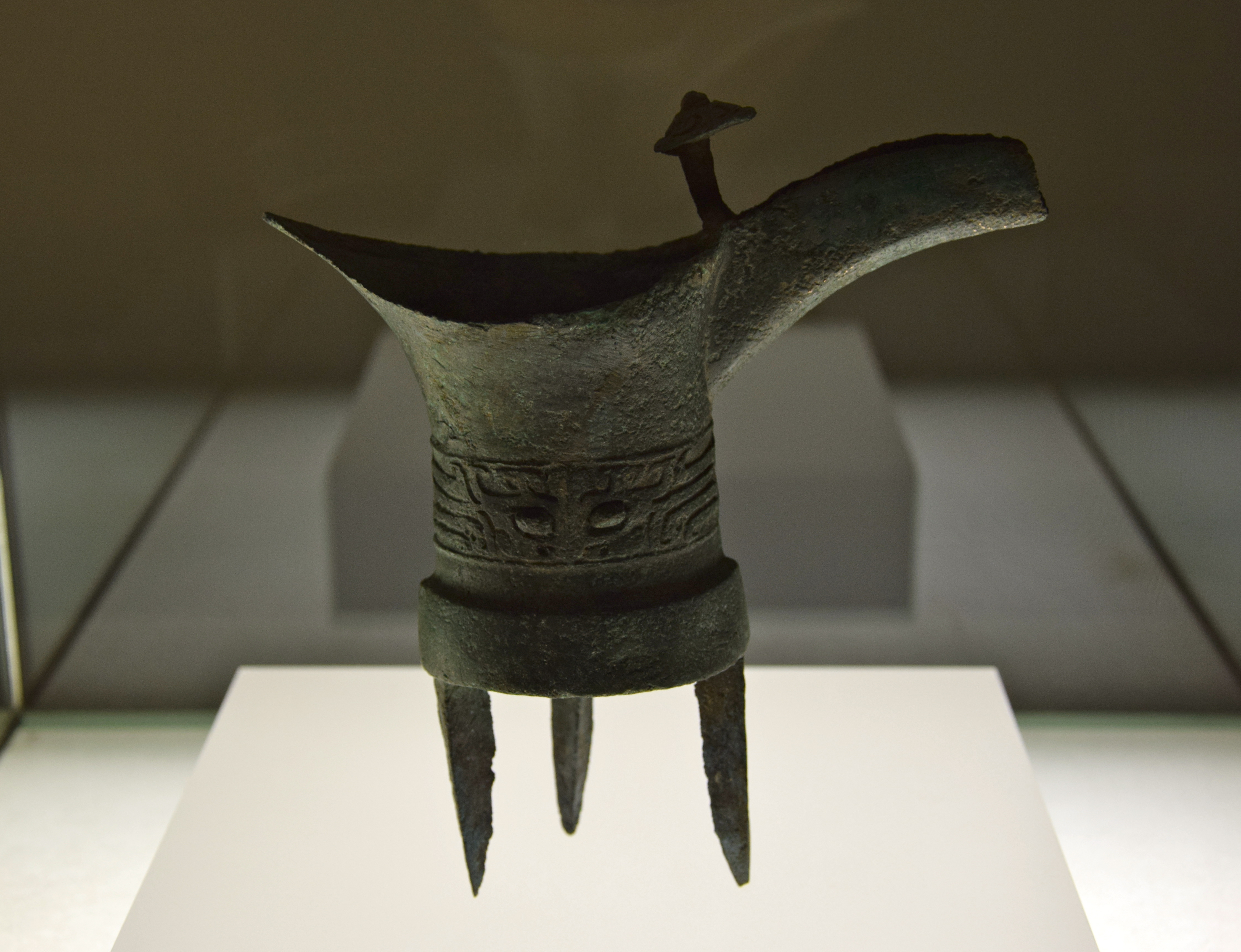Erligang on:
[Wikipedia]
[Google]
[Amazon]
The Erligang culture () is a Bronze Age urban civilization and archaeological culture in
 Erligang bronzes developed from the style and techniques of the earlier Erlitou culture, centered at to the west of Zhengzhou. Erligang was the first archaeological culture in China to show widespread use of bronze vessel castings. Bronze vessels became much more widely used and uniform in style than at Erlitou.
Erligang bronzes developed from the style and techniques of the earlier Erlitou culture, centered at to the west of Zhengzhou. Erligang was the first archaeological culture in China to show widespread use of bronze vessel castings. Bronze vessels became much more widely used and uniform in style than at Erlitou.
China
China, officially the People's Republic of China (PRC), is a country in East Asia. It is the world's most populous country, with a population exceeding 1.4 billion, slightly ahead of India. China spans the equivalent of five time zones and ...
that existed from approximately 1600 to 1400 BC. The primary site, Zhengzhou Shang City, was discovered at Erligang, within the modern city of Zhengzhou
Zhengzhou (; ), also spelt Zheng Zhou and alternatively romanized as Chengchow, is the capital and largest city of Henan Province in the central part of the People's Republic of China. Located in north-central Henan, it is one of the National ...
, Henan, in 1951.
Major sites
The culture was centered in the Yellow River valley. In its early years, it expanded rapidly, reaching the Yangtze River. The culture then gradually shrank from its early peak.Zhengzhou
Later investigations showed that the Erligang site was part of an ancient city surrounded by a roughly rectangular wall with a perimeter of about . The walls were of rammed earth construction, a technique dating back to Chinese Neolithic sites of the Longshan culture (c. 3000–1900 BC). It has been estimated that the walls would have been wide at the base, rising to a height of . Large workshops were located outside the city walls, including a bone workshop, a pottery workshop and two bronze vessel workshops. The modern city sits on the remains of the Erligang city, rendering archaeological excavations impossible. Therefore, most of the information about the culture comes from studying other Erligang sites.Panlongcheng
The large site atPanlongcheng
Panlongcheng () or Panlong City is an archaeological site associated with the Erligang culture () during the Shang dynasty period (). The site is located just north of the Yangtze river, on the bank of the Panlong lake, and is surrounded by the Fus ...
, on the Yangtze River in Hubei, is currently the largest excavated site of Erligang culture. It was discovered in 1954, and excavated in 1974 and 1976.
Since Zhengzhou lacked access to local bronze metals, sites like Panlongcheng were probably used to secure distant metal resources. A large number of bronze wares were found in Panlong City. Through carbon dating of wood samples unearthed from Tonglu Mountain in Dazhi, Hubei and Tongling Mining and Metallurgical Site in Ruichang, Jiangxi, comparisons were made between the bronze wares unearthed in Panlongcheng City and Tonglu Mountain, It was found that the mineral elements of Panlongcheng bronzes are the same as those of Tonglushan, which indicates that the copper of Panlongcheng originated from Tonglushan.
Bronze vessels
Relation to traditional accounts
Many Chinese archaeologists believe that the ancient city of Zhengzhou was one of the early capitals of the Shang dynasty mentioned in traditional histories. However many scholars and Western archaeologists have pointed out that, unlike the later Anyang settlement, no written records have been found at Erligang to link the archaeological remains with the official history.References
* * *Further reading
* * {{Prehistoric cultures of China Archaeological cultures of China Bronze Age in China Shang dynasty 16th-century BC establishments in China